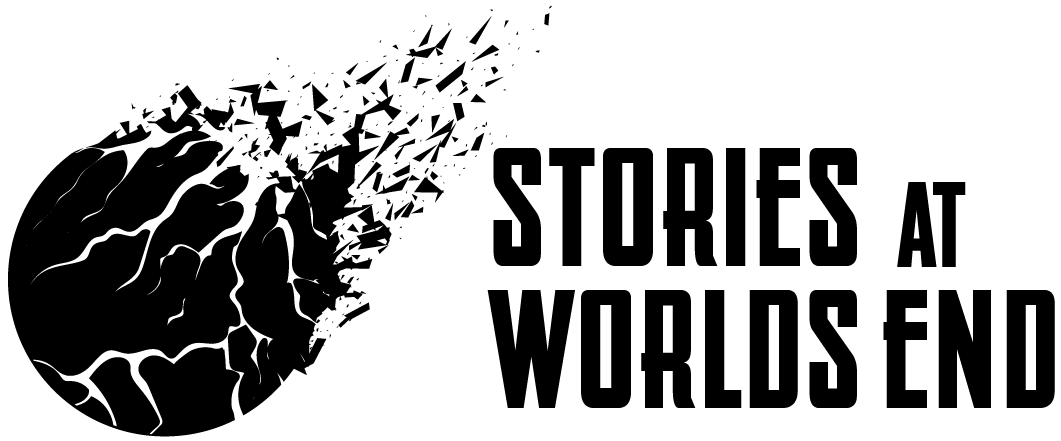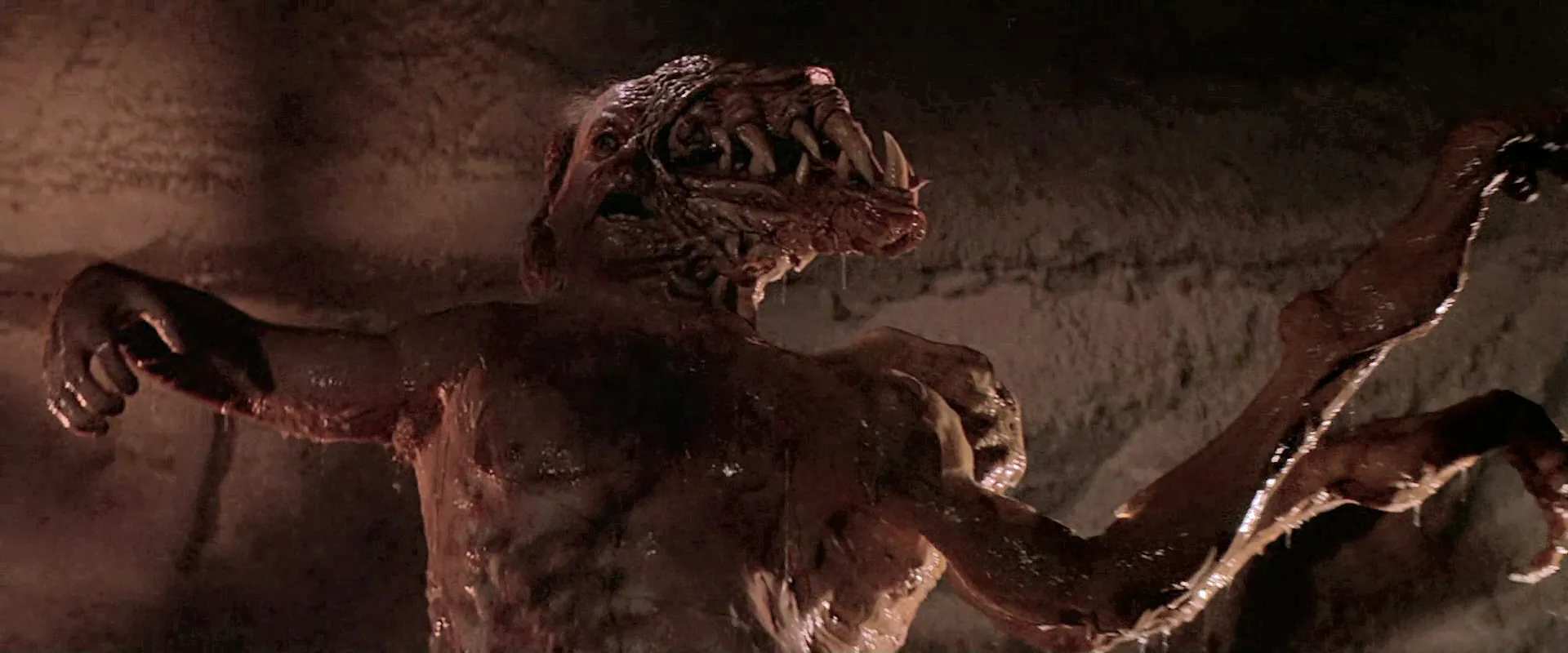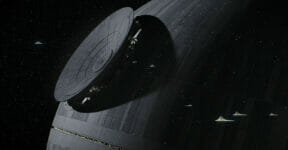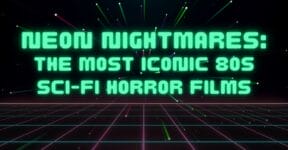Heavy use of CGI in the film industry didn’t really start until the late 1980s, meaning that the vast majority of movies before then still relied on good-old practical effects and some camera trickery to give us monsters, aliens, UFOs, lasers, and so forth. There were indeed some films before the 1980s that used CGI applications, such as Westworld (1973) with pixilation technique to display the point of view of The Gunslinger and Star Wars (1977) with 3D wireframe graphics for the famous Death Star sequence.
CGI had not gone mainstream until TRON (1982), but by then, most films still haven’t fully embraced the technology. A lot of the 80s sci-fi horror movies make for the perfect examples of how filmmakers turned to practical effects to build alien terrors and create abomination of all sorts to induce fears in the audience.
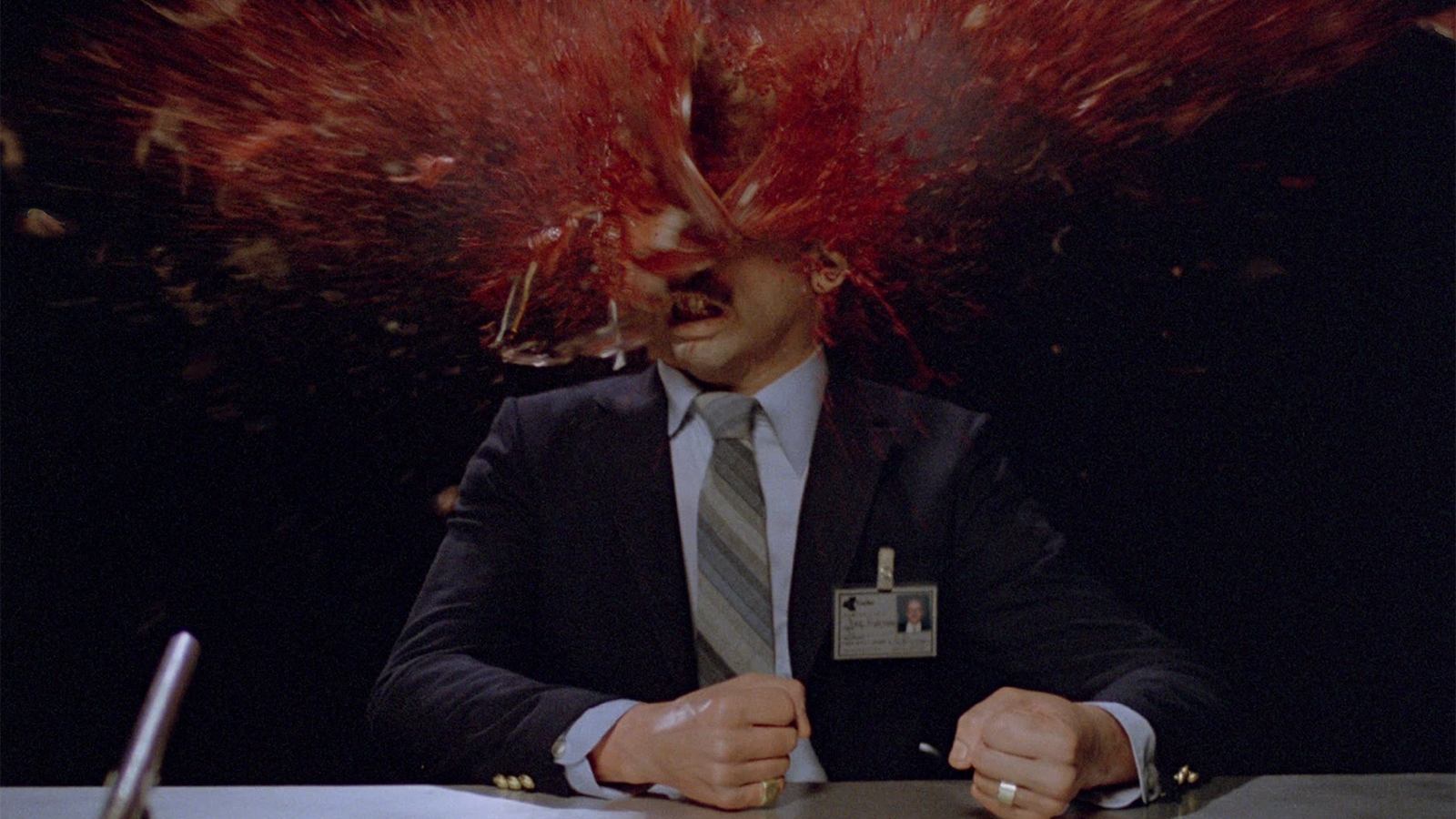
The Thing (1982)
Here’s something you probably didn’t know about The Thing: of the film’s entire $15 million budget, about 10% of it (or $1.5 million) was spent on the creature effects. Special make-up effects creator Rob Bottin was in charge of the project, and he smartly used everyday objects like rubber, food products, some mechanical parts, and a mixture of chemicals to build an alien creature capable of taking on just about every form imaginable. Bottin explained the creature had always been a galaxy-faring species, and so it was advanced enough to develop all kinds of strange physical attributes, such as spider legs sprouting from its head and stomach that also functioned like a gigantic mouth. While he wasn’t completely sure that John Carpenter would accept all those ideas, the director used them all. All Carpenter wanted was a true monster instead of a typical guy-in-a-suit type.
The Fly (1986)
It’s actually impressive to think what you could build using only practical effects with no CGI at all. Case in point: The Fly (1986), directed by David Cronenberg. Special make-up effects artist Chris Walas developed the “Brundlefly” over the course of three months. One of the major problems with the human-fly hybrid in the movie was that the transformation from human and fly into the hybrid took several stages, and each must be designed separately because it was a metaphor for the natural aging process.
Brundle therefore had to go through different phases in the transformation. It all started with him losing his teeth, hair, and fingernails while his skin becoming more lumpy and discolored. Everything got progressively worse from there until finally the hybrid creature burst out of his hideously deteriorated skin. The hybrid itself appeared asymmetrical and deformed from every angle, rather than a properly developed organism. In short, the stages of transformation can be outlined:
- Skin discoloration accompanied by facial sores and lesions. Brundle had tiny yet visible fly hairs on the face and out of the wound on his back.
- A random piece of prosthetics covering a sizable portion of Brundle’s face, arms, torso and feet. Later on, he had to wear a wig with some bald spots on it and crooked dental prosthesis as well.
- Brundle had a full-body latex suit on. Mind you, that this stage of the transformation ended up being deleted from the film, but it appeared in the trailer (the “monkey-cat” scene).
- The second latex suit did appear in the film. This version also featured much more exaggerated body parts. Brundle also used contact lenses that made one of his eyes look much larger than the other.
The final version (referred to as the “space bug” phase by the film crew) came out when the human-fly hybrid creature took its true shape. Various parts of the body were controlled by cable and rods. At the end of the film, when the Brundlefly creature was severely injured, the special effects team used another puppet.
Scanners (1981)
One of the finest examples of practical effects in 80s sci-fi horror can be seen in Scanners (1981), especially in the climactic and utterly brilliant head explosion scene. Make-up artist Dick Smith provided a plaster skull covered with gelatin for the scene, and it was packed with basically everything they could get their hands on in the studio, including wax, scraps, and even leftover burgers. But here’s the most interesting part: the special effects supervisor Gary Zeller crouched down behind the dummy and shot the back of the head with a shotgun.
We think you can’t really overestimate the role of CGI in changing the landscape of special effects in the film industry. Thanks to digital image manipulation, no actor needs to use excruciating latex masks, as you’ve all seen in the original Planet of the Apes series. Instead, the newer reboot series took advantage of motion capture technology, and the result was as photorealistic as it could get. We live in the future now, where camera trickery and computer-generated imagery can visualize even the impossible. That said, despite all the hi-tech solutions we have today, some of us are still fond of the handmade props, practical effects, and puppets in sci-fi horror.
Can you name any CGI-heavy movies from the 1980s? Do you think practical effects still look good on today’s high resolution screen? We’d love to hear from you.
Other Things You Might Want to Know
Is TRON (1982) CGI or practical effects?
It was a combination of both. CGI didn’t really become a mainstream choice by filmmakers until TRON (1982). The technology at the moment was nothing compared to modern standards, but the computer animation used in the film (only somewhere between 15 and 20 minutes long for the digital terrain and vehicles) turned out to be a development landmark in the development of CGI technology.
Have there been movies generated entirely by AI?
There have been quite a few, with varying results, and many of them are short videos rather than a feature film. One of the most popular is a 12-minute movie titled “The Frost” as every shot is generated by A.I. While there are many other examples, The Frost is considered the first generative AI video in which the style is consistent throughout the duration.
Jeff Goldblum’s latest filmography:
| Film | Year | Role | Note |
| Isle of Dogs | 2018 | Duke | Voice |
| Jurassic World: Fallen Kingdom | Dr. Ian Malcolm | ||
| Hotel Artemis | Niagara (The Wolf King) | ||
| The Mountain | Dr. Wallace Fiennes | ||
| The Boss Baby: Family Business | 2021 | Dr. Erwin Armstrong | Voice |
| Jurassic World Dominion | 2022 | Dr. Ian Malcolm | |
| Asteroid City | 2023 | The Alien | |
| They Shot the Piano Player (Dispararon al pianista) | Narrator | Voice | |
| Wicked | 2024 | The Wonderful Wizard of Oz | Post-production |
| Wicked Part Two | 2025 |
Check out other articles by month:
